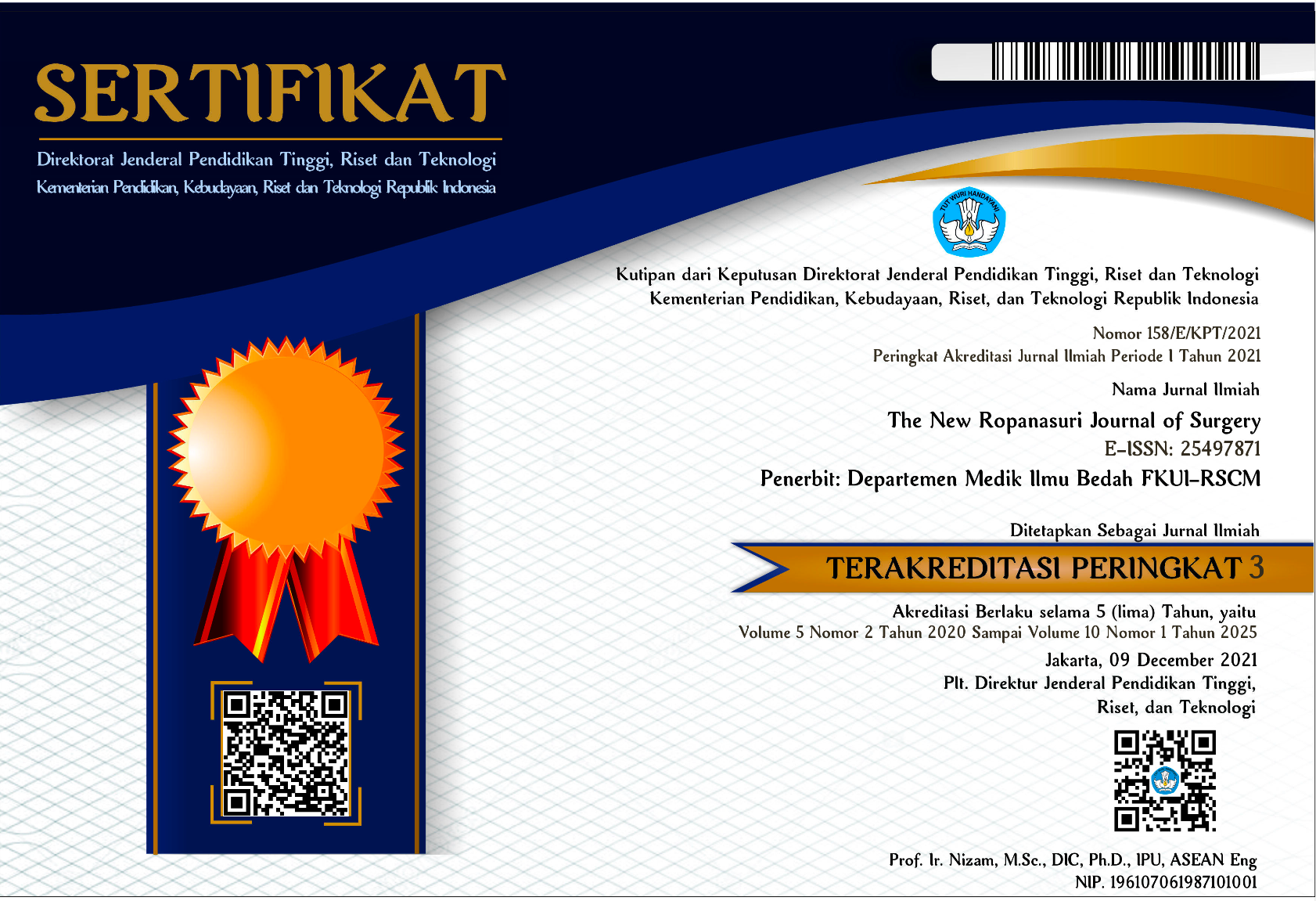Abstract
Introduction. One of the most common complications in vascular access was bacteremia or bloodstream infection. The purpose of this study was to know the infection rate in dialysis double lumen catheter (DLC) and it’s relating factors. Method. This was a cross–sectional analytical study that was carried out by enrolling all ≥18–year–old subjects who underwent surgical insertion of DLC for hemodialysis during 2015 in Cipto Mangunkusumo General Hospital, Jakarta. Variables of bloodstream infection, age, gender, diabetes mellitus, history of previous DLC infection, history of catheter related bacteremia, site of insertion and duration were subjected to statistical analysis. Significance achieved if p value <0.05. Results. Out of all subjects, there were 19 (17.6%) subjects with bacteremia. Whereas, 5 (9.4%) subjects were those with tunneled DLC, and the remaining 14 (26.4%) were those with non–tunneled DLC. Factors found to be related with infection were the use of non–tunneled DLC (p = 0.043) and no history of previous DLC insertion (p = 0.038). Conclusion. Tunneled DLC was found superior to non–tunneled one to prevent catheter related bacteremia. The use of non–tunneled DLC should be avoided as hemodialysis access.
Recommended Citation
Basri, Novrizal S. and Patrianef, Patrianef
(2017)
"Infection of Double Lumen Catheter as Hemodialysis Access,"
The New Ropanasuri Journal of Surgery: Vol. 2:
No.
1, Article 6.
DOI: 10.7454/nrjs.v2i1.18
Available at:
https://scholarhub.ui.ac.id/nrjs/vol2/iss1/6













